Nichole Louise's Blog, page 2
June 19, 2025
Review: Inanna by Emily H. Wilson
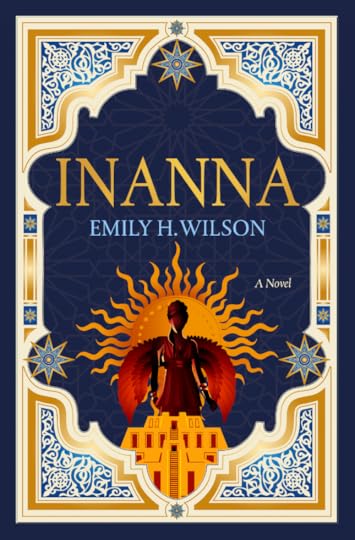
Inanna by Emily H. Wilson is a historical fantasy retelling of the Epic of Gilgamesh and the mythology of the ancient Sumerian Gods. To be honest, I have not read the Epic of Gilgamesh and only knew a little bit about ancient Sumer and its gods when I went into this book. That said, perhaps it was better I went in with a clean slate, so to speak, so that I wouldn’t constantly be comparing/contrasting the ancient legends. I was interested to learn about ancient Sumer and the goddess Inanna.
Inanna, the first full-blooded Anunnaki (god) born on earth, is only coming of age in this first book of a trilogy, a mere 13 or 14 when she is sent to live with her high god grandfather and experience his licentious ways, only to be married off to his son–her uncle, who is too busy having an affair with his own sister. While Inanna is a goddess of the ancient world, “the goddess of love” or so everyone tells her, I was still uncomfortable with the situations in which she was placed even if we did not get them in detail. For example, all gods must perform the “sacred rites” in their temples in front of a crowd–those rites being sex with another god or a chosen mortal. Inanna has heard all her short life that she is a goddess of love and must submit. She must be meek and pliable; be what everyone wants her to be. Despite following these parameters, she cannot get her “mee” to work–which is a type of magical weapon bracelet bound to a god. It is not until Inanna begins to really come into her own, find her own power and independence, that she learns her mee is for war, not love. While the reader is supposed to sympathize with Inanna, there are many times I found myself confused at her dialogue or action choices–particularly with her cousin Gilgamesh. The reader is told many times that she is attracted to him despite them not really knowing each other, and a pseudo-forced-feeling romance ensues.
Which brings me to Gilgamesh. I did not find him likeable at all, and he had little redeeming qualities. He’s entitled and cocky, and of course this reader does not think him worthy enough for the goddess Inanna. The only interesting point I found about Gilgamesh’s POV was the will they/won’t they build up to an extremely brief romance with his comrade at arms, Enkidu. However, the ending of their romance is so abrupt you hardly get time to take a breath before the story moves on.
The only character I felt truly relatable and understandable was Ninshubar, a young woman from an African village who is taken from her home and sold as a slave in Sumer. Ninshubar is resourceful, strong, noble, and filled with integrity. She must learn Sumerian swiftly as an attendant in a temple of a Sumerian god. However, Ninshubar’s story soon intertwines with both Inanna and Gilgamesh as Inanna begins to form a plan to overthrow the tyrannical elder gods.
Overall, despite the unique setting, I felt Inanna to be quite rushed. This reader could not always get her bearings before we were rushing off on the next leg of the adventure. I think not knowing the original epic and myths at times put me at a disadvantage in keeping all the gods’ names straight. More often than not, Wilson tells us everything that’s happening rather than showing us. The showing scenes are engaging, but there were too few, resulting in a disconnect from the characters and their motivations. Some of the more interesting scenes involved Inanna’s journey into the underworld in which she must pass through seven gates–gates that seem strangely technologically advanced (the author’s allusion to the Anunnaki actually being aliens rather than gods who “came down from heaven”??) Unfortunately, I did not connect with these characters as much as I’d hoped.
June 13, 2025
Review: Night Watch by Jayne Anne Phillips
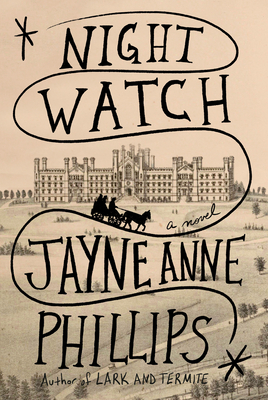
Night Watch by Jayne Anne Phillips follows a family though the American Civil War from its start to tenuous post-war reconstruction. The novel begins in 1874 West Virginia with young ConaLee and her mute mother Eliza being taken to the Trans-Allegheny Lunatic Asylum by a man known only as “Papa,” but who is not, in fact, ConaLee’s birth father. From there, the story backtracks to other character perspectives in an unraveling of the family’s story, such as through ConaLee’s “grandmother” Dearbhla, an elderly Irish woman who has a mystical side. Dearbhla raised ConaLee’s birth father as her surrogate son, his true parentage an enslaver and an enslaved woman. Dearbhla also partly raised Eliza, a daughter of the enslaver family, pointing to an uncomfortable familial subtext that is not really addressed or known by the majority of the characters.
When ConaLee’s father (there’s a reason he is not given name early in the novel) is injured as a solider for the Union in the American Civil War, he convalescences under a Dr. O’ Shea. While he eventually regains his health, he suffers from amnesia and does not remember his family. He takes the surname O’ Shea and effectively begins a new life. As Eliza receives treatment for her mental health condition at the asylum, ConaLee acting as her nurse, the reader uncovers the reason for Eliza’s muteness and catatonic state. Here we come to the large chunk of the story hinging on brutal, uncomfortable, and graphic depictions of SA. I, and many readers, am not a fan of SA plot points in both pushing a narrative forward and encompassing a characters’ arc.
Night Watch is written in a highly stylized way that will not be every reader’s cup of tea. At times, there is almost too much nuance and subtext that it’s hard to understand what is actually occurring in a scene. I understand writing in an artful way to avoid being too on the nose, however, when those stylistic choices hinder understanding plot points or even simple logistics, it hinders not only the reader’s ability to fully connect with the characters, but also the reading experience as a whole.
May 29, 2025
Review: The Mercies by Kiran Millwood Hargrave
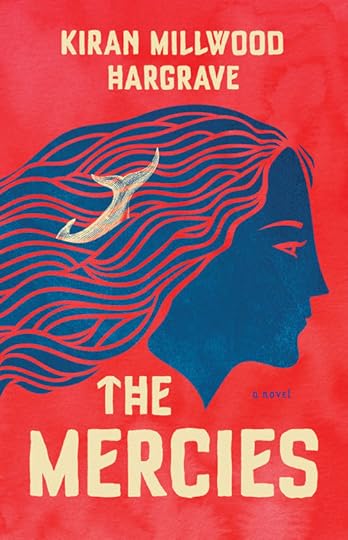
The Mercies by Kiran Millwood Hargrave is a 17th century tale concerning the Vardo, Norway witch trials. If you think this sounds familiar, that’s because The Witches of Vardo by Anna Bergman features the same subject matter. While there are some shared character names and similar beautiful writing styles, the stories themselves are quiet different. While Bergman’s interpretation walks the line of magical realism, The Mercies is very much rooted in realism–the stark reality of women and their place in the harsh world of men.
The Mercies follows Maren from Vardo, whose brother and father are killed in a large storm that also took many of the village men. As such, Vardo is left as a village of women fending for themselves–even going so far as to take a boat out to fish for themselves (scandalous in 17th century Norway!) The other POV in The Mercies follows Ursula, affectionately known as Ursa, who is plucked from her home in Bergen and married off the a Scottish inspector, Absalom Cornet, who has been recently assigned to investigate Vardo. Ursa is very naive of the world outside Bergen, and of men. She is essentially thrown from the frying pan into the fire as she comes to know her husband’s sinister true nature of wanting to uncover witches in Vardo to heighten his own social status.
Maren and Ursa form a fast friendship, Maren teaching Ursa how to keep house from everything from making bread to sewing and cleaning. Hargrave builds the tension within the village, the social circles of the women growing more suspicious and cold, and the relationship between Maren and Ursa as they navigate the growing danger of Absalom’s inspection. Hargrave’s writing style and observations of the world are both beautiful and unique, making the entire read an enjoyable experience.
May 22, 2025
Review: Joan of Domremy by Kennith Maitland
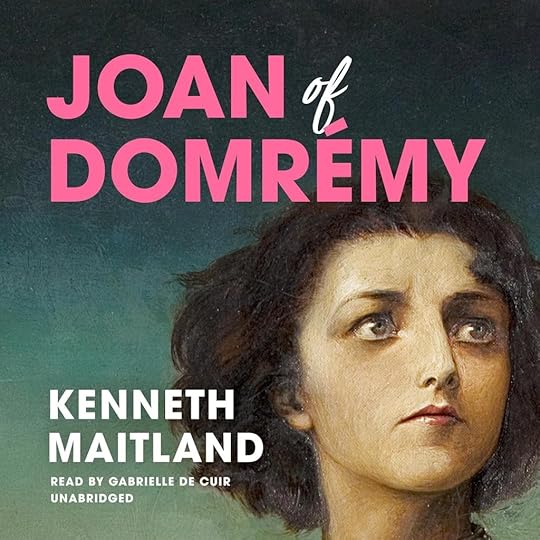
Joan of Domrémy by Kennith Maitland is a novella snapshot of Joan of Arc’s life when she seeks an audience with the Dauphin to save the French city of Orléans from the English. In Joan’s efforts to speak with the Dauphin about her visions to save France, she encounters a gardener, a starving English soldier, an armorer, and a nobleman who will host at his home the marriage between the Dauphin’s lover and an English noble. The reader soon finds, however, that reality seems slightly askew. The characters appear not as they seem. Time seems to both shift and standstill, each encounter seeming to occur concurrently. This shifting sense of reality made it challenging to find, and hold onto, an anchor in this story.
Of course Joan comes up against sexist and misogynist views of the day, which is not necessarily a surprise, but Joan’s reactions to them either didn’t sit totally right with me, or I did not understand her motivations for some of her dialogue. Perhaps this novella went over my head in terms of it being a more psychological, philosophical talking-heads only type of vignette, seeming to exist in a vacuum, rather than an emotionally evocative historical snapshot of one of Joan’s many trials. Due to these reasons, I ultimately did not connect with this novella as I had hoped.
May 20, 2025
Review: The Blackbirds of St. Giles by Lila Cain
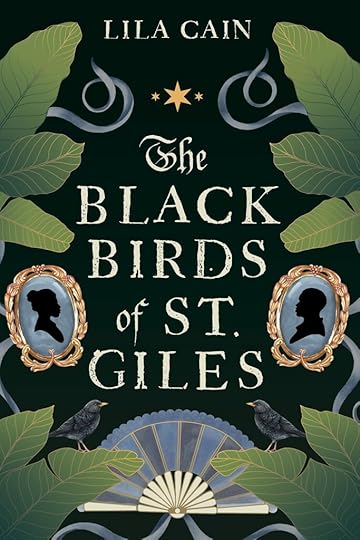
The Blackbirds of St. Giles by Lila Cain (two authors writing under one name) takes the reader from an 18th century Jamaican plantation, the English colonies during the American Revolution, to the diverse and grimy streets of London. Blackbirds started off strong with a visually striking and emotionally wrought scene of an uprising of enslaved peoples’ against plantation owners. Among them, Daniel, his brother, mother, and toddler sister Pearl. Amongst the chaos, Daniel is only able to save Pearl, leaving behind the rest of his family and his love Adanna, who works within the main house. Daniel and Pearl live with the Maroons for a time, but the transient and often threatened way of life proves dangerous for young Pearl.
Daniel learns that the British Army is recruiting enslaved Africans to fight the Continentals in exchange for manumission. I really loved this plot point and detail because this fact is oftentimes overlooked in the study of the American Revolution. While Daniel at times recognizes the dichotomy of fighting for the British, he is determined to make a better life for Pearl. He makes his way up through the ranks, achieving officer serving under a a man named Fitzallen. Fitzallen and his wife take Daniel and Pearl under the wing, though the reader doesn’t see much of this relationship save toward the end of it. The group journeys back to England with a mortally wounded Fitzallen, who presents Daniel with his last will and testament to take his name and estate upon his death.
Life does not go according to plan when Pearl and Daniel arrive in London, bereft of any help, resources, or connections. They soon face the prejudices of the city, despite its diversity, and wind up in an enclave known as St. Giles where marginalized folks live in a network of tunnels under the malevolent stewardship of underwolrd-boss type Elias, the “King of the Rookery.” With the help of Jen, a helpful Irish woman, and Jerome, an apothecary, Daniel and Pearl begin to carve a new life. Daniel soon makes a name for himself as a boxer. Their time in London is -esque, mixed with Harlots.
There’s a lot of spoilery points I don’t want to talk about here, so I will keep things general. Blackbirds absolutely started off amazing. I loved the rebellion opening and Daniel’s time as a soldier fighting the Continentals (albeit brief), but I felt that after Daniel and Pearl settle in St. Giles the story steadily fizzles. Honestly I would have preferred (and would love to read it if the authors write a prequel) a novel about Daniel and Pearl first in Jamaican, then in the American colonies during the war. Perhaps it’s personal preference, but the complexities of these characters in those specific times and places seem more interesting.
I felt the story steadily fizzled for a few reasons. There is a half-baked (at best) romance where there wasn’t much lead up, chemistry, or resolution. The characters always seemed at arms length from each other, and as such, I never truly believed their romance (which in itself felt very fleeting.) There was also a tinge of a miscommunication trope here, which I personally find very frustrating and unnecessary in any story. The boxing aspect almost seemed too modern to me, if that makes sense. I know the sport was around then, but something about those scenes took me out of the 18th century setting. Although Elias is presumably the main antagonist, he is in, if I remember correctly, three scenes. The reader doesn’t really get any back story on him, and all we know of him are his superficial qualities. We don’t really know his motives, which makes him two dimensional. There were several tertiary characters that I found myself confused at times, forgetting who someone was at other times. There is another sort of antagonist equating to a few scenes, but while we know more of her backstory, her motives are also a bit unclear. And finally, perhaps most importantly, I think the story could have greatly benefited from having Pearl’s, and/or Jen’s perspectives. There’s quite a blind spot when it comes to those two presumably very important women in Daniel’s life, leaving a kind of void in the narrative.
I really wanted to love Blackbirds as a whole as much as I did reading the first quarter, but the story ultimately unraveled on many levels as the plot progressed.
The Blackbirds of St. Giles will be released May27, 2025
May 13, 2025
Review: A Daughter’s Place by Martha Batiz

A Daughter’s Place by Martha Batiz follows real historical figure, Isabel de Cervantes (a surname she did not gain until much later), the illegitimate daughter of Miguel de Cervantes, the famous author of Don Quixote. In 1599 Madrid, Isabel is plucked from her humble life working in a tavern and supporting her little sister and grandmother by an elegant woman claiming to be her aunt. Against her will, Isabel is taken by her aunt Magdalena to live in the Cervantes household with her other aunts and her cousin Constanza. She does not meet her father at first however, due to his job as a traveling tax collector. What’s more, Miguel has a wife, Catalina, and another home altogether. The problem soon presents itself with both Isabel and Catalina not knowing about the existence of each other.
Due to social norms and expectations, Isabel is integrated into the Cervantes household posing as a maid rather than a family member. Gossip soon spreads, however, due to Isabel’s resemblance to her father. Isabel starts as a naive teenager lacking formal education and lacking “higher class” manners. Her cousin, Constanza, chafes against the sudden appearance of Isabel and resents her family’s new responsibility to her. A frenemy situation develops between Isabel and Constanza over the years, with the reader at first sympathizing with Isabel but by the end of the novel sympathizing with Constanza. The Wheel of Fortune turns, their social statuses and places in the world flip nearly opposite by the end. Despite the hardships she’s endured, or perhaps because of them, Isabel turns into someone unlikable – petulant and cruel in some cases.
The larger theme and scope of this novel is of course to highlight the important, but overlooked women in Miguel de Cervantes’ life. It explores how the trajectory of his life, and rise and fall of his fame shaped their lives as well. It highlights the historical reality of women living at the will and actions (good or bad) of the men they are attached to or associated with. While this is an important topic to explore and discuss, overall I found myself unable to connect with the characters on a deeper level as they always felt at an arm’s length. I think I perhaps felt this way due to the author’s style of a lot of telling over showing. There were also time jumps and important events glossed over that also contributed to my inability to completely connect with the characters.
A Daughter’s Place will be released May 20, 2025
Review: This Savage World by Anna Housego
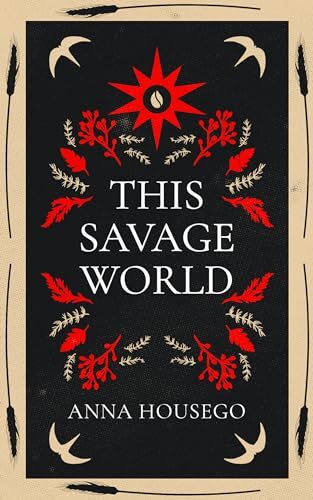
This Savage World by Anna Housego opens in 1770s London where young Maggie Bloodworth is trying to make her way in a city unforgiving to the poor. She is taken on as an apprentice midwife and eventually learns her trade with enough skill to stand on her own two feet. As Maggie’s life progresses, she marries and has a child, but her fledgling family is soon torn asunder when her husband is sent to the American colonies, her daughter is sent to a workhouse, and Maggie is sent to the Australian colonies. I was reminded a bit of Fled by Meg Keneally, which is one of my favorites, but Maggie’s story takes a different trajectory. She essentially must start anew despite being married and having a child; to give up the hope of ever seeing either one of them again.
Maggie meets Charlie, a British solider who means to carve out a new life in Australia. Maggie and Charlie build a life together in a new climate much harsher than England, with all the unique social norms of the time regarding how those with convict pasts move to “respectable.” While the setting is interesting, the author seems to give us a cataloging of Maggie’s entire life, simply telling us one event after another rather than crafting a focused plot. And by that I mean, “X did this and then X went here. X liked this and that. X was born here, etc.” This Savage World started promising, but it felt like 80%, if not more, of the book was summary of events rather than experiencing those events in real time through Maggie’s eyes. If you’ve read my reviews before, you probably know that too much summary of important events in books is a pet peeve of mine because that style makes it extremely hard to connect personally with the characters or to feel the full emotional weight of situations. To me, so much summary inherently holds the reader at arm’s length. Despite this fact, I was determined to read through to the end. While there were interesting moments and beautifully worded sentences, they were fleeting. I believe this book could have really flourished if not for all the summary.
April 22, 2025
Review: The Traitor of Sherwood Forest by Amy S. Kaufman
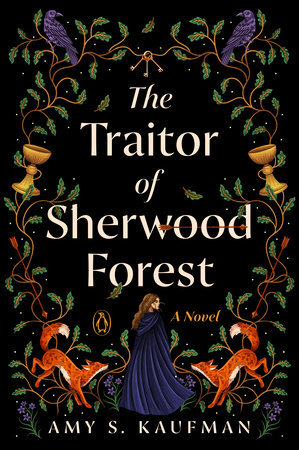
The Traitor of Sherwood Forest by Amy. S. Kaufman reframes the Robin Hood legend from the perspective of ordinary peasant girl Jane Crowe. The story opens with Jane’s lover, Bran, introducing her to the band of “merry men” in the Greenwood. From there, Jane undergoes an initiation filled with subterfuge and tricks with Robin (very on brand) to prove her trustworthy and, above all, loyal. Jane begins her work for Robin by taking employment in the kitchens at King’s Houses to serve as an agent for Robin and his men against the greedy nobles and church. It does not take long, however, for Jane to get in over her head as she gets carried away with the idealistic and romantic version of Robin Hood rather than recognize his true nature.
The opening sequence of Traitor was fast-paced and engaging, the story dragged a bit a quarter in, then picked up and kept my rapt attention until the end. Despite Jane’s involvement with Bran, she finds herself inexplicably drawn to Robin. Where Bran in safe and reliable, Robin is dangerous, exciting, and mercurial. The reader is right there along with Jane in being conflicted over knowing she should not be lusting after Robin, but very much still lusting after him. We know Robin is bad news–he’s an attention seeker, manipulative; he prizes loyalty above all which proves dangerous, he is very much an ends justify the means type of bandit and not in the romantic, idealistic, heroic naive way Jane sees him for so long. As readers we know all this, we know Jane is naive, and yet–and yet! the author is able to lead us into the trap of Robin’s charm and charisma enough for us to want to root for him and Jane. Kaufman builds a delicious tension between the two, and while Jane is naive–she isn’t stupid. A young woman, not yet wise to much, would believably put a man like Robin on a pedestal. And as many young women soon find, the men they put on pedestals inevitable show their true, darker natures that are very much misaligned with the idealized version.
I read some others reviewers found the ending to be anticlimatic. I partly agree, however it fits within this specific context. I also think there is a possibility the author might have a sequel planned because the events of Traitor seem to take place before all the legends we know.
The Traitor of Sherwood Forest will be released April 29, 2025
April 5, 2025
Review: Lost Souls of Leningrad by Suzanne Parry
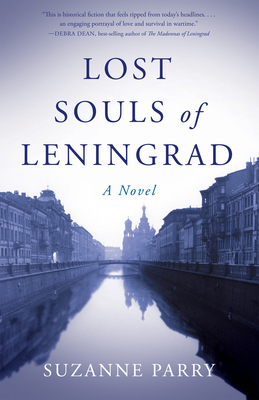
Lost Souls of Leningrad by Suzanne Parry follows professional violinist Sofya (“Sofi”) and her teenaged granddaughter Yelena (“Lena”) as they navigate the events leading up to, during, and after the brutal and infamous 1941 Siege of Leningrad . Having rekindled her old love with Admiral Vasili, Sofi gains valuable insider information that war is coming. As such, she and Lena compile food, cash, and supplies for whatever hardships the future may bring. The tip off proves literally lifesaving as they come to rely on these stores during the siege in the winter of 1941-42.
I couldn’t help but compare Lost Souls to The Siege by Helen Dunmore, which became an instant favorite for me with its masterful writing. I will try to judge Lost Souls on its own merit despite the natural similarities of exploring the same subject matter. A lot of Parry’s writing was telling vs showing, some events glossed over, yet I still felt the book to be a page turner at times. We’re told some important plot points up front, and others sprinkled throughout, sometimes seeming as random exposition. That said, I was still engaged with the characters and their heartbreaking struggles. Parry does not sugar coat the brutality of the siege, nor the violent carnage of war. TW for violence and gore, as there are a handful of such moments. In the face of such inhumanity, Sofi and Lena struggle to hold onto their own. A somewhat predictable turn of events befalls Lena, but I actually found it a bit of stretch considering the state of her health during the siege, but in retrospect it was all a plot point for the reunification of Sofi and Vasili.
Overall I enjoyed the story (as much as one can enjoy such subject matter,) or should I say I enjoyed the glimmers of heartbreaking humanity and hope in the face of such despair.
Suzanne Parry’s concurrent sequel about Lena’s mother during the war, The Communist’s Secret, will be released August 5, 2025.
March 28, 2025
Review: A Mercy by Toni Morrison

I somehow only recently discovered A Mercy by Toni Morrison, but the 17th century Americas POVs and exploration therein immediately drew me because I feel like many historical fiction narratives of enslaved people are set in the 19th century. A Mercy follows a small cast of characters, namely Florens, a young enslaved girl who is given up by her mother to a reverend with the hopes of ensuring a somewhat better life than she herself has had (her mother being the first of the generation to make the brutal, dehumanizing transatlantic passage.)
The POV chapters from Florens have unique prose that may be a challenge for some readers in that, from this character’s unique life experience, the sentence structure, syntax, grammar, etc. are not “standard.” I know this book was written in 2008, but Florens’ chapters really reminded me of the unique prose style Debra Magpie Earling’s The Lost Journals of Sacajewea (2010.) The reader follows not just Florens, but the others on the property she is taken too: Lina, a Native American woman and sort of surrogate mother to Florens, Sorrow, a young woman of European heritage who fell on hardship and brutality at an early age, and Rebekka the wife of “Sir” and the Mistress of the property.
Through artful prose, Morrison explores the backstories of each woman in the harsh world of late 17th century colonial America where brutality, dehumanization, and rape (TW there are a few scenes alluding to this subject matter throughout) are commonplace. The line that really struck me as the raw, emotional core and message of this book is, “To be female in this place is to be an open wound that cannot heal.”
A Mercy reads like a vignette of each woman’s life. I would have liked to have explored their narratives further, but Morrison’s precise and meaningful prose packs a punch in this short read.



